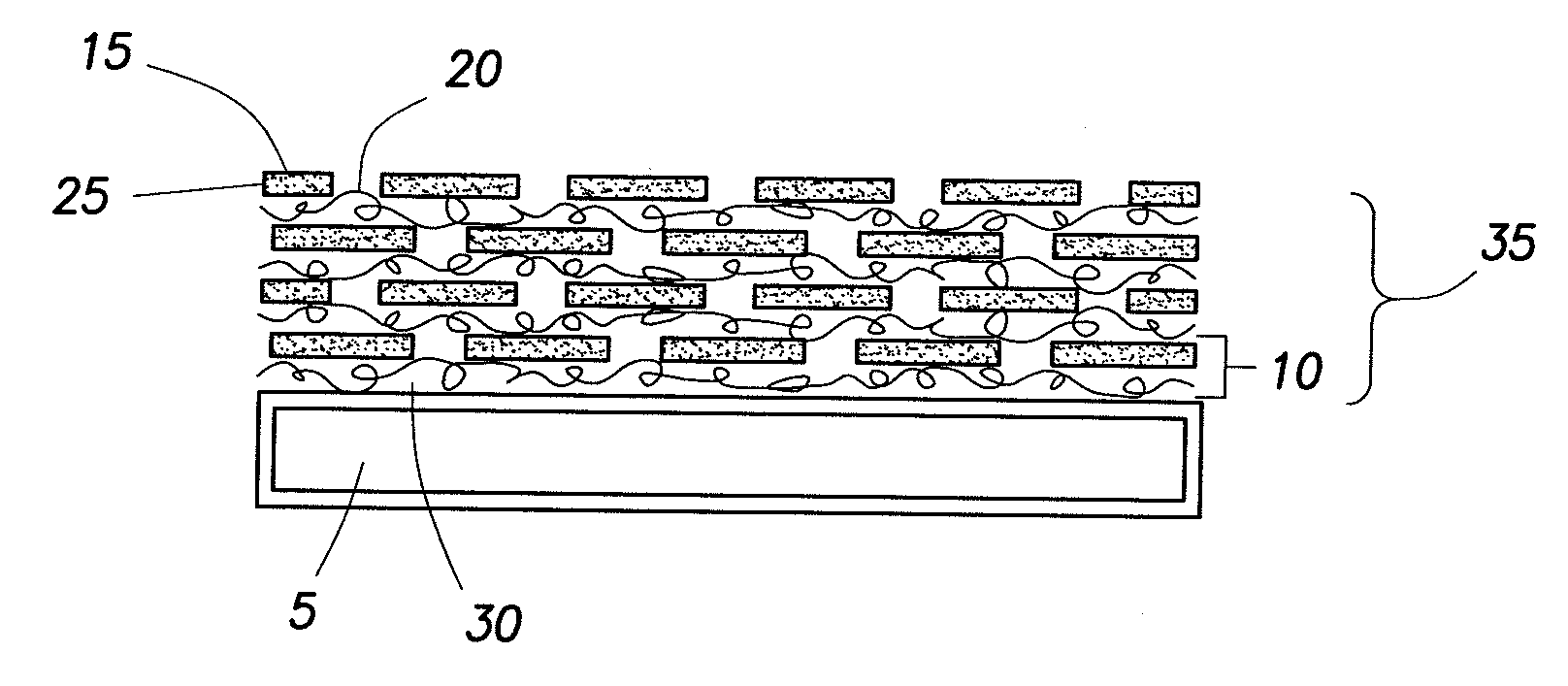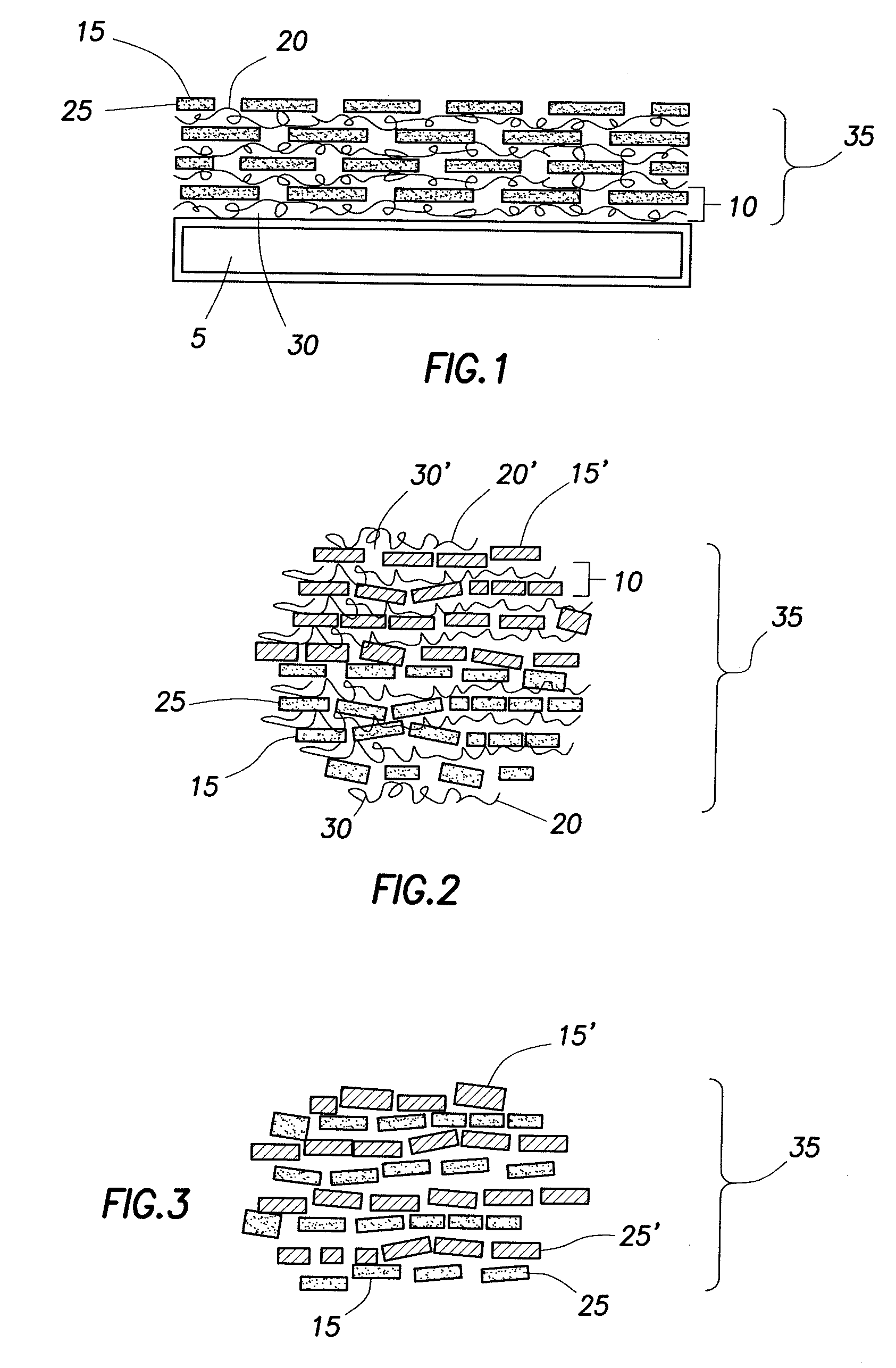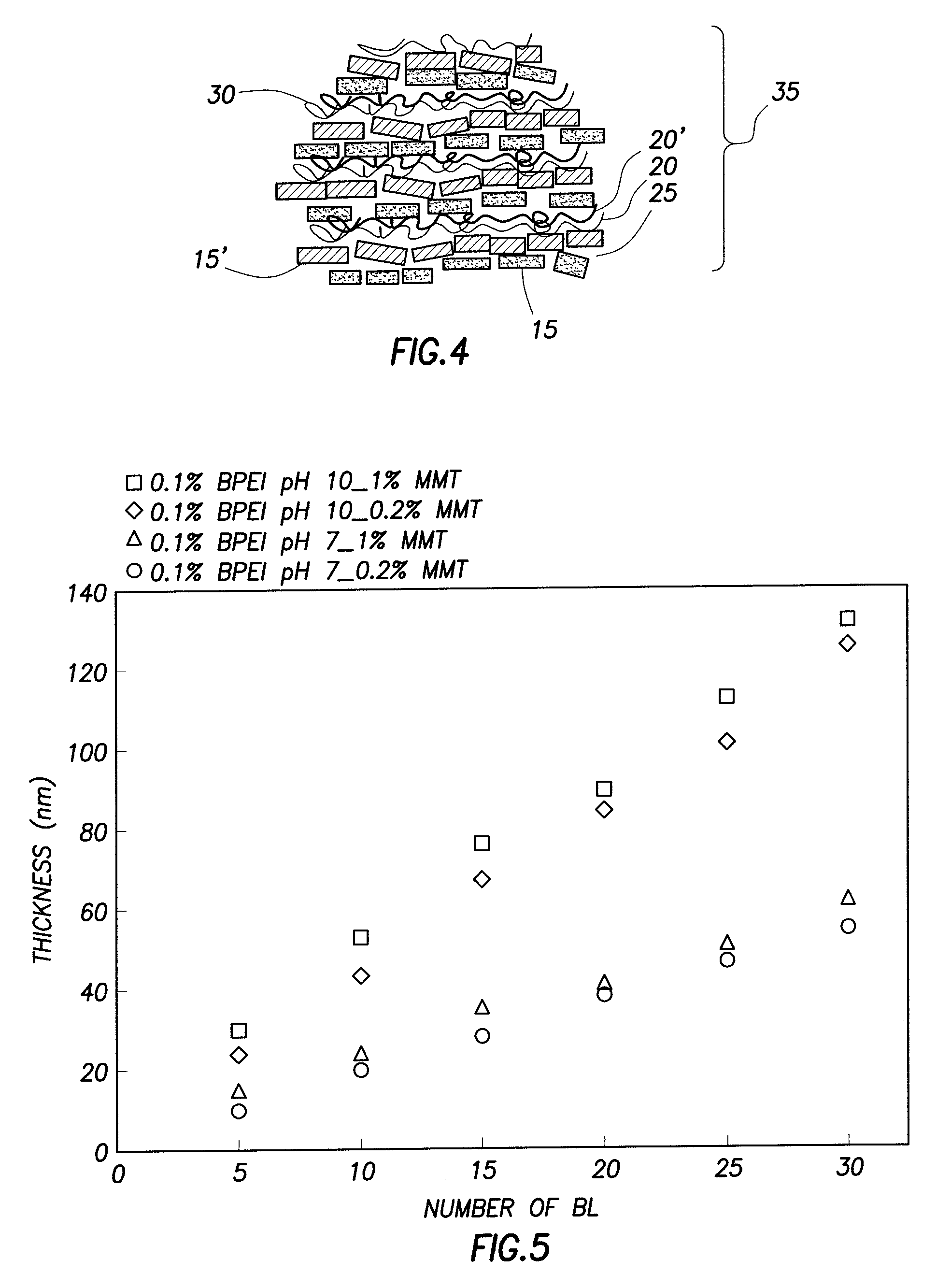Multilayer Coating for Flame Retardant Substrates
a flame retardant and multi-layer technology, applied in the field of coatings, can solve the problems of halogenated materials forming toxins, wide-spread property damage and injuries, and affecting the health of people,
- Summary
- Abstract
- Description
- Claims
- Application Information
AI Technical Summary
Problems solved by technology
Method used
Image
Examples
example 1
[0054]Preparation of Deposition Mixtures. Cationic deposition solutions were prepared by dissolving 0.1 wt. % branched polyethylenimine, with a molecular weight of 25,000 g / mol (commercially available from Aldrich of Milwaukee, Wis., into 18.2 MΩ deionized water from a Direct-QTM 5 Ultrapure Water System (commercially available from Millipore of Billerica, Mass.). The unadjusted pH of this solution was 10.3, but this value was adjusted to 7 and 10 by adding 1M hydrochloric acid (36.5-38.0% HCl available from Mallinckrodt Chemicals of Phillipsburg, N.J.). Sodium montmorillonite (MMT) (Cloisite® Na+ a trademark of Southern Clay Products, Inc. of Gonzales, Tex.) was exfoliated by adding it to deionized water (0.2 or 1.0 wt. %) and slowly rolling for 24 h, to produce the anionic deposition mixtures. MMT had a cationic exchange capacity of 0.926 meq / g and a negative surface charge in deionized water. Individual platelets had a density of 2.86 g / cm3, with a planar dimension of 10-1,000 nm...
example 2
[0076]Southern Clay Products, Inc. (Gonzales, Tex.) supplied the natural sodium montmorillonite (MMT) (Cloisite® Na+ a trademark of Southern Clay Products, Inc.) used in this study. MMT had a cationic exchange capacity of 0.926 meq / g and a negative surface charge in deionized water. Individual platelets had a density of 2.86 g / cm3, diameter of 10-1000 nm (most have d>200 nm) and a thickness of 1 nm. Cationic polyacrylamide (Superfloc® C-491, a trademark of American Cyanamid Company) was provided by CYTEC (West Paterson, N.J.). This was a copolymer containing 5 mol % of positively-charged repeat units. Cationic poly (diallyldimethylammonium chloride) (PDDA) and branched polyethylenimine (BPEI) (Mw=25,000 g / mol and Mn=10,000 g / mol) were purchased from Aldrich (St. Louis, Mo.). Polystyrene (PS) film, with a thickness of 250 μm, was purchased from Goodfellow (UK) and used as the substrate for transmission electron microscopy. Single side polished (1 0 0), 500 μm thick silicon wafers (Un...
example 3
[0083]Open-cell PU foams from NIST were coated with 10 and 40 bilayers of BPEI (at pH 8 and 10) and MMT. The onset of degradation and percent char at 500° C., determined by TGA for different foam coatings, was shown in FIGS. 11a), b). At 400° C., the highest char percentage was achieved with the pH 8 BPEI coating (11.73 wt. % char from foam coated with 40 bilayers). The coating made with BPEI pH 8 had higher clay concentration and was more dense, which may protect the foam from further degradation. Based on the success of the TGA measurements (FIGS. 11a), b)), larger foam pieces with different coatings, as well as a bare one, were placed in an oven and heated up from room temperature to 400° C. and then held for 30 minutes to observe the degradation of foams. The uncoated foam melted and stuck to the ceramic crucible and could not be detached with tweezers. The char from the foams coated with BPEI (pH 8 or pH 10), and MMT was easily removed from the crucibles. Foam coated with pH 8 ...
PUM
| Property | Measurement | Unit |
|---|---|---|
| thick | aaaaa | aaaaa |
| thick | aaaaa | aaaaa |
| time | aaaaa | aaaaa |
Abstract
Description
Claims
Application Information
 Login to View More
Login to View More - R&D
- Intellectual Property
- Life Sciences
- Materials
- Tech Scout
- Unparalleled Data Quality
- Higher Quality Content
- 60% Fewer Hallucinations
Browse by: Latest US Patents, China's latest patents, Technical Efficacy Thesaurus, Application Domain, Technology Topic, Popular Technical Reports.
© 2025 PatSnap. All rights reserved.Legal|Privacy policy|Modern Slavery Act Transparency Statement|Sitemap|About US| Contact US: help@patsnap.com



